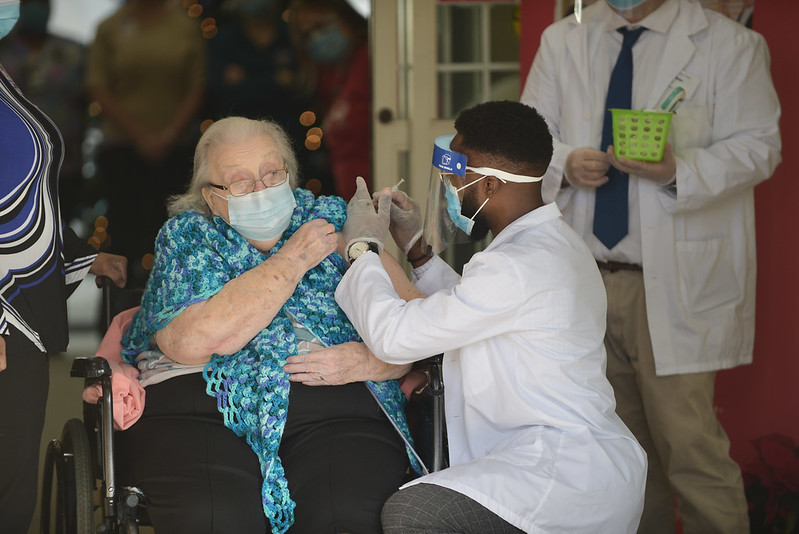BOWIE, Md. — Economic recovery and a boost to health care funding to fight COVID-19 were highlights of the proposal Gov. Larry Hogan, R put forth on Wednesday.
Maryland’s budget took a $1 billion hit in planned spending for fiscal year 2022, down to $49 billion from the $50.4 billion brought in budgeted for the current fiscal year, 2021.
While significant, the reduction is a far cry from the $4 billion loss predicted when Maryland enacted its shelter in place order at the beginning of the pandemic.

President Pro Tem Melony Griffith, D-Prince George’s and member of the Senate Budget and Taxation Committee, called the less-than-expected loss of revenues a call for “cautious optimism.”
The less-than-expected dip kept the state from a deep dive into rainy day funds, currently totaling $1.2 billion in cash reserves.
Although the economic downturn was less than expected, portions of the economy still face significant concerns 10 months into the pandemic.
Entertainment venues and tourism-related industries took the hardest hits and incomes plummeted thanks to COVID-19 related restrictions and closures.
To help these and other businesses stay afloat, the budget allocates $700 million for the Maryland Strong Economic Relief initiative.
The fund started in October with $250 million from the state’s rainy day fund to help struggling businesses in Maryland.
In a bid to ease the tax burden on Marylanders during the pandemic, the budget calls for ending income taxes on unemployment benefits and increasing the deductible on retiree income.
The Hometown Heroes act, a $15,000 tax exclusion on retirement income for ex-first responders in Maryland, would be expanded to remove all taxes on retirement income linked to their service.
Healthcare in Maryland received a strong boost as the eradication of COVID-19 remains the No. 1 issue across the nation.
Maryland’s Medicaid received an infusion of $13.5 billion to ensure 1.5 million Marylanders can receive medical treatment.
Vital employees of the Maryland Department of Health could see an increase in their checks.
The governor has set aside $30.5 million to increase salaries for nurses, security personnel and other direct care workers.
Specific details for vaccination funding were not listed, but $10 million was set aside last year to help with efforts to roll out a COVID-19 vaccine.
Federal assistance from the new Biden administration is expected to help ramp up inoculations.
Coordination between the state and federal officials is important to an effective vaccine rollout, according to Sen. Douglas J.J, Peters, D-Prince George’s, also a member of the Senate Budget and Taxation Committee.
Education saw a new record set for funding for fiscal year 2022, with $7.5 billion in funds allocated for K-12 education.
Higher education also saw a series of increases, including $134 million for student financial aid programs in an effort to make college more affordable.
Funding for education has come under scrutiny over the last year, with several legislative boosts expected to pass the General Assembly this session.
That includes the Blueprint for Maryland’s Future, a major overhaul of Maryland’s educational system Hogan vetoed in May.
Reaction to the budget proposal was generally positive, with Peters calling the bill a “great starting point.”
A public hearing for the budget — bills SB0491 and HB0588 — in full will take place in the Senate Budget and Taxation Committee, though a date has not yet been set.


You must be logged in to post a comment.